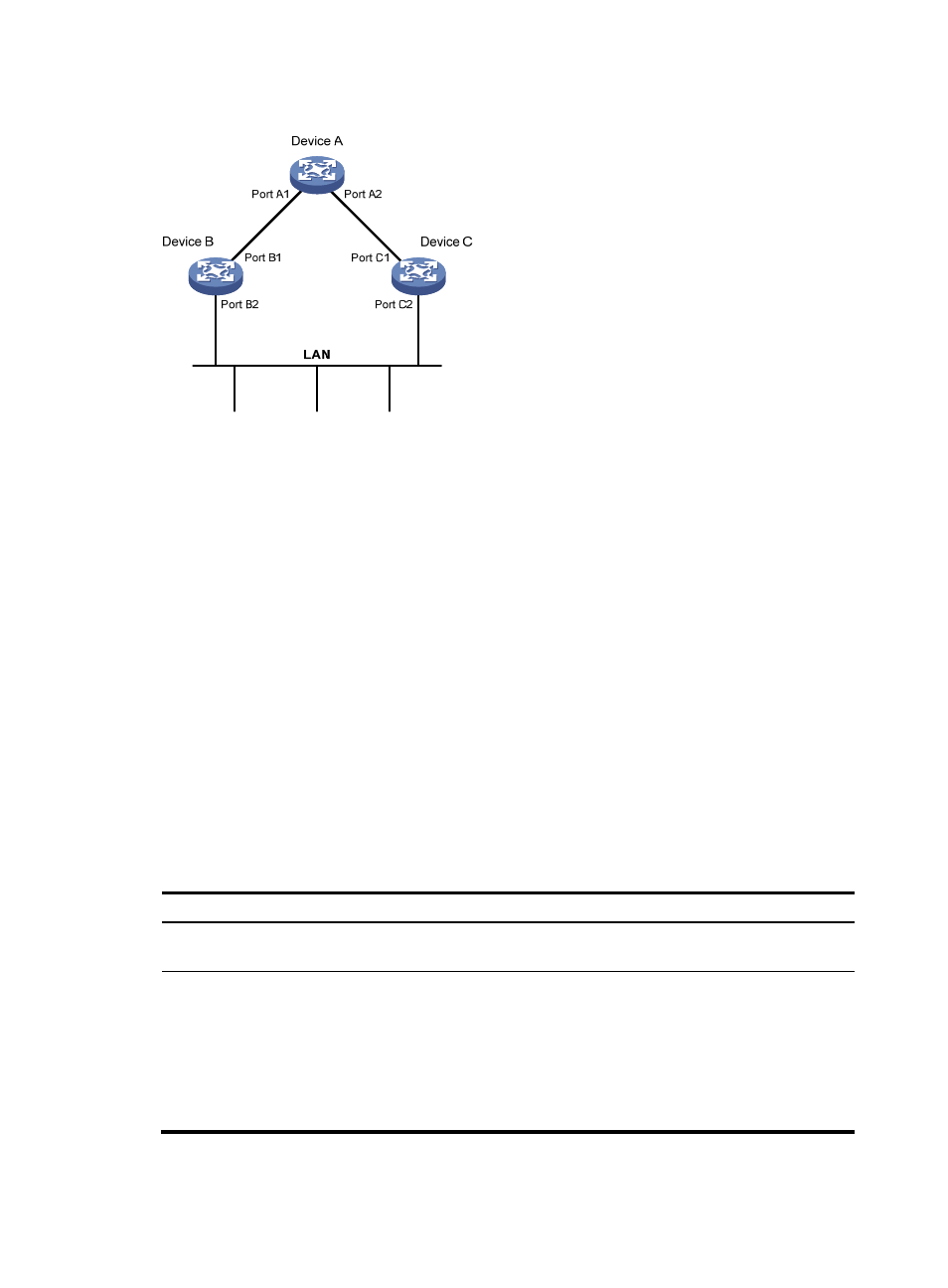Path cost, Calculation process of the stp algorithm – H3C Technologies H3C WX3000E Series Wireless Switches User Manual
Page 53

44
Figure 10 Schematic diagram of designated bridges and designated ports
Path cost
Path cost is a reference value used for link selection in STP. STP calculates path costs to select the most
robust links and block redundant links that are less robust, to prune the network into a loop-free tree.
Calculation process of the STP algorithm
The STP algorithm uses the following calculation process:
1.
Initial state
Upon initialization of a device, each port generates a BPDU with itself as the designated port, the device
as the root bridge, 0 as the root path cost, and the device ID as the designated bridge ID.
2.
Root bridge selection
Initially, each STP-enabled device on the network assumes itself to be the root bridge, with its own device
ID as the root bridge ID. By exchanging configuration BPDUs, the devices compare their root bridge IDs
to elect the device with the smallest root bridge ID as the root bridge.
3.
Non-root bridge: Selection of root port and designated ports
describes the process of selecting the root port and designated ports.
Table 8 Selection of the root port and designated ports
Step
Description
1
A non-root-bridge device regards the port on which it received the optimum configuration BPDU
as the root port.
describes how the optimum configuration BPDU is selected.
2
Based on the configuration BPDU and the path cost of the root port, the device calculates a
designated port configuration BPDU for each of its other ports.
•
The root bridge ID is replaced with that of the configuration BPDU of the root port.
•
The root path cost is replaced with that of the configuration BPDU of the root port plus the path
cost of the root port.
•
The designated bridge ID is replaced with the ID of this device.
•
The designated port ID is replaced with the ID of this port.
